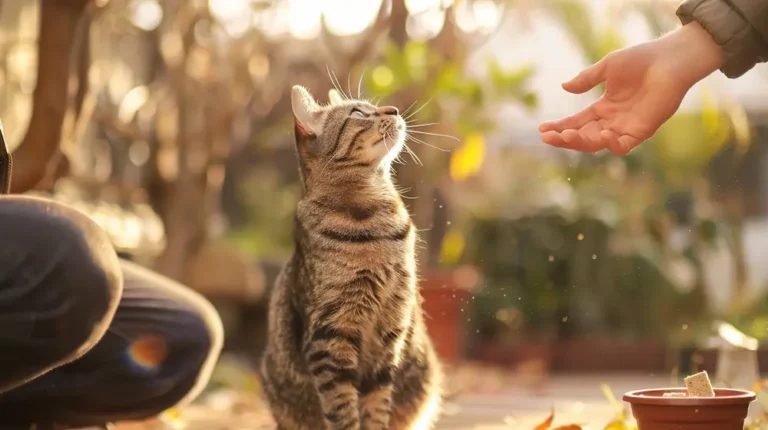The Real Reason Your Cat Stretches When Seeing You!
Understanding cat behavior is essential for ensuring their well-being and harmonious coexistence with humans.
Stretching is an activity that goes beyond mere physical exercise, enhancing blood flow and muscle health while also playing a role in social bonding.
Surprisingly, cats stretch to relieve stress, releasing endorphins that help maintain emotional stability.
Yet,
But what exactly should one watch for, and how can these issues be managed effectively?
Benefits of Cat Stretching

Cat stretching offers numerous benefits, including increased blood flow and improved muscle and joint health.
When a
Stretching helps maintain their range of motion, ensuring they stay limber and ready for activity.
By engaging with toys or using scratching posts, cats achieve a full-body extension, promoting overall muscle health.
Encouraging your
This simple act supports their natural instincts and contributes to a happier, healthier life. So, next time your
Stretching and Social Instincts
Beyond its physical benefits, stretching plays a significant role in a
When a
This behavior signals a relaxed, friendly disposition.
Cats also use stretching to mark their territory, as scent glands in their paws leave behind their unique scent.
This subtle act communicates ownership and familiarity.
Additionally, when a
Encouraging such behavior by providing scratching posts or interactive toys can further support these social instincts.
Understanding these nuances helps strengthen the bond between
Stretching as Stress Relief

Stretching serves as an essential self-soothing behavior, helping cats manage stress and anxiety.
When a
This act not only relaxes their muscles but also provides a mental break from any sudden stressors.
Cats often use stretching as a coping mechanism, especially during unsettling situations.
By engaging in full-body stretches, they can alleviate tension, increase blood flow, and maintain their range of motion.
Observing a
Providing a secure environment with ample stretching opportunities can greatly enhance a
Common Types of Cat Aggression
Understanding the various forms of
Territorial aggression arises when a
Redirected aggression happens when a
Petting-induced aggression can occur if a
Play aggression is common among kittens and young cats as they learn boundaries.
Recognizing these types, owners can create a more harmonious environment.
Offering enough resources, creating safe spaces, and using positive reinforcement are essential strategies to manage and reduce aggression in cats, ensuring a peaceful coexistence for all.
Signs of Aggressive Behavior

Identifying aggressive behavior in cats is essential for preventing potential harm and addressing underlying issues promptly. Recognizing the signs can make a significant difference in understanding a
Common indicators include hissing, growling, or spitting, often accompanied by ears pinned back or dilated pupils.
A tense body, tail lashing, or attempts to flee or hide are also strong signals.
Physical actions like swatting, scratching, or biting shouldn’t be ignored. Observing these behaviors closely helps in deciphering the root cause of aggression.
By staying attentive to these signs, caregivers can create a safer, more harmonious environment.
This knowledge fosters a deeper connection with their
Preventing Cat Aggression
To prevent
High perches and hiding spots can give them a sense of safety, reducing stress.
Positive reinforcement, such as treats and praise, encourages good behavior, making your
Regular play sessions with interactive toys can channel a
Professional Help for Aggression

When
If health problems aren’t the cause, consulting an animal behaviorist can provide valuable insights and a tailored behavior modification plan. In severe cases, medication might be prescribed to help manage the aggression.
Training sessions can also be beneficial, teaching the
Conclusion
In understanding
However, being aware of signs of aggression and its triggers is essential. Preventing and addressing aggression through nuanced approaches can maintain harmony. If needed, don’t hesitate to seek professional help for a happier, healthier






